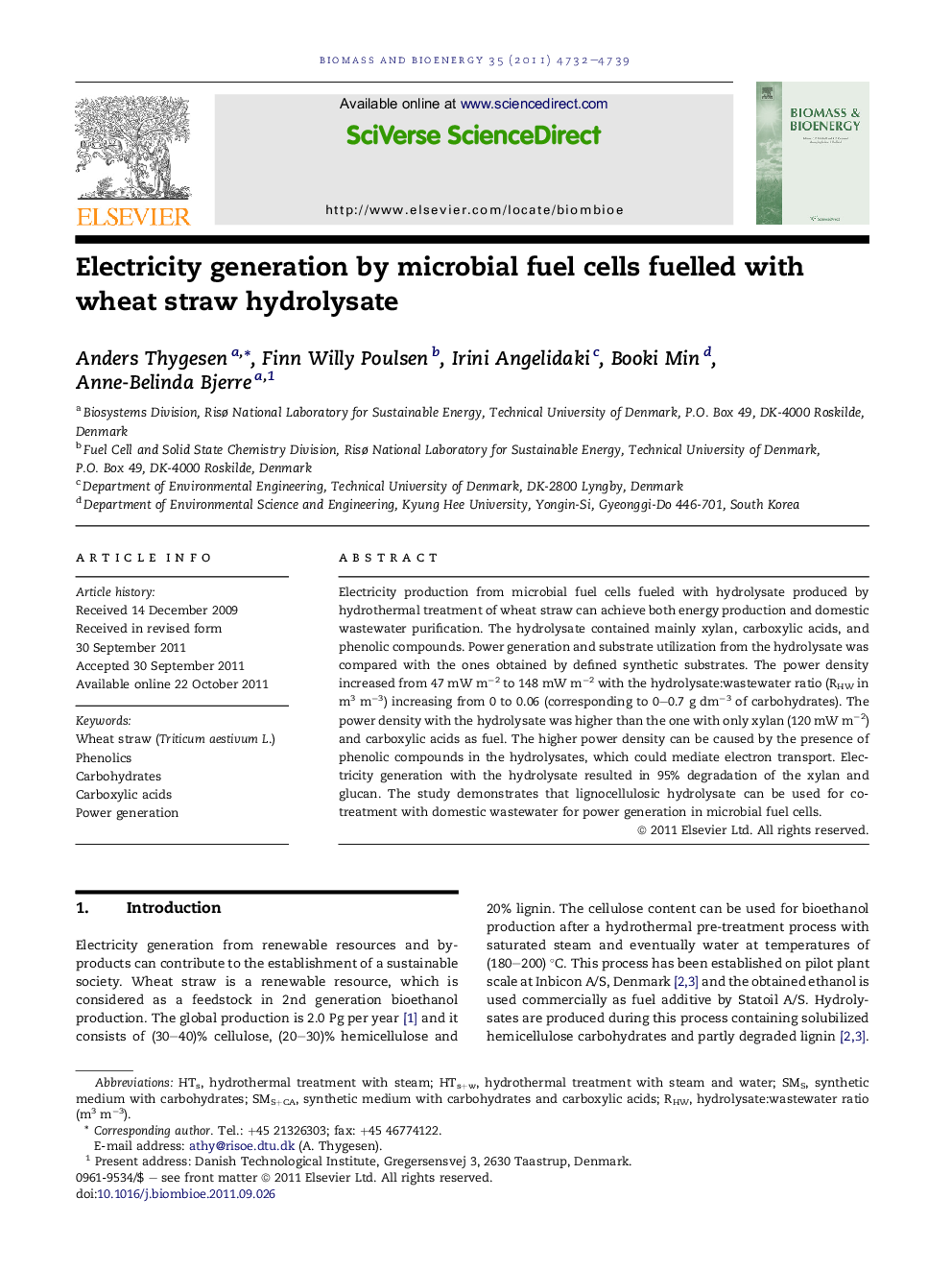| Article ID | Journal | Published Year | Pages | File Type |
|---|---|---|---|---|
| 677810 | Biomass and Bioenergy | 2011 | 8 Pages |
Electricity production from microbial fuel cells fueled with hydrolysate produced by hydrothermal treatment of wheat straw can achieve both energy production and domestic wastewater purification. The hydrolysate contained mainly xylan, carboxylic acids, and phenolic compounds. Power generation and substrate utilization from the hydrolysate was compared with the ones obtained by defined synthetic substrates. The power density increased from 47 mW m−2 to 148 mW m−2 with the hydrolysate:wastewater ratio (RHW in m3 m−3) increasing from 0 to 0.06 (corresponding to 0–0.7 g dm−3 of carbohydrates). The power density with the hydrolysate was higher than the one with only xylan (120 mW m−2) and carboxylic acids as fuel. The higher power density can be caused by the presence of phenolic compounds in the hydrolysates, which could mediate electron transport. Electricity generation with the hydrolysate resulted in 95% degradation of the xylan and glucan. The study demonstrates that lignocellulosic hydrolysate can be used for co-treatment with domestic wastewater for power generation in microbial fuel cells.
► Electricity production in microbial fuel cells. ► Hydrolysate from hydrothermal treated wheat straw as fuel. ► Larger electricity production than with simple compounds as fuel. ► No need for detoxification and nutrients to the hydrolysate. ► Effective (95%) microbial utilization of the polymeric carbohydrates.
